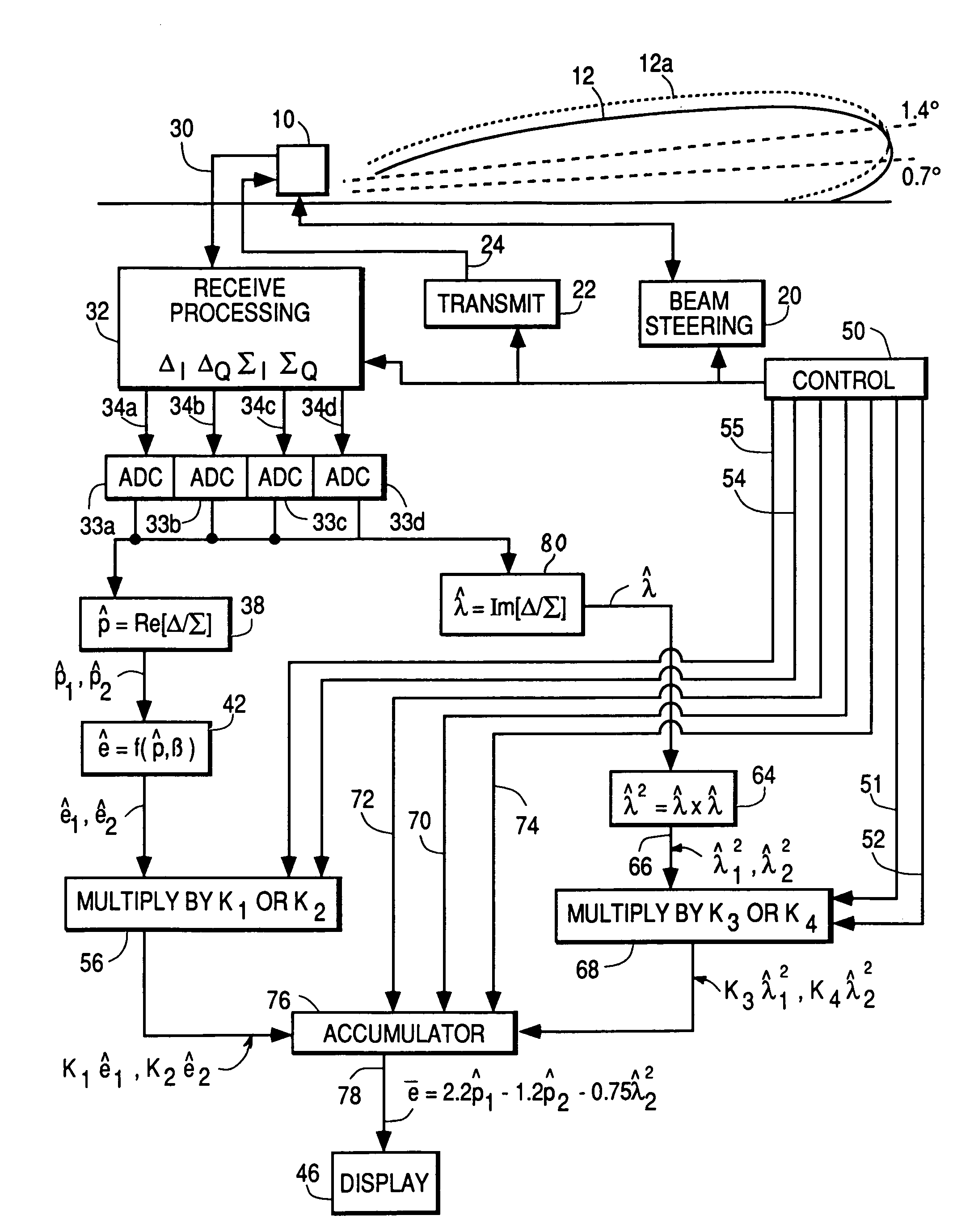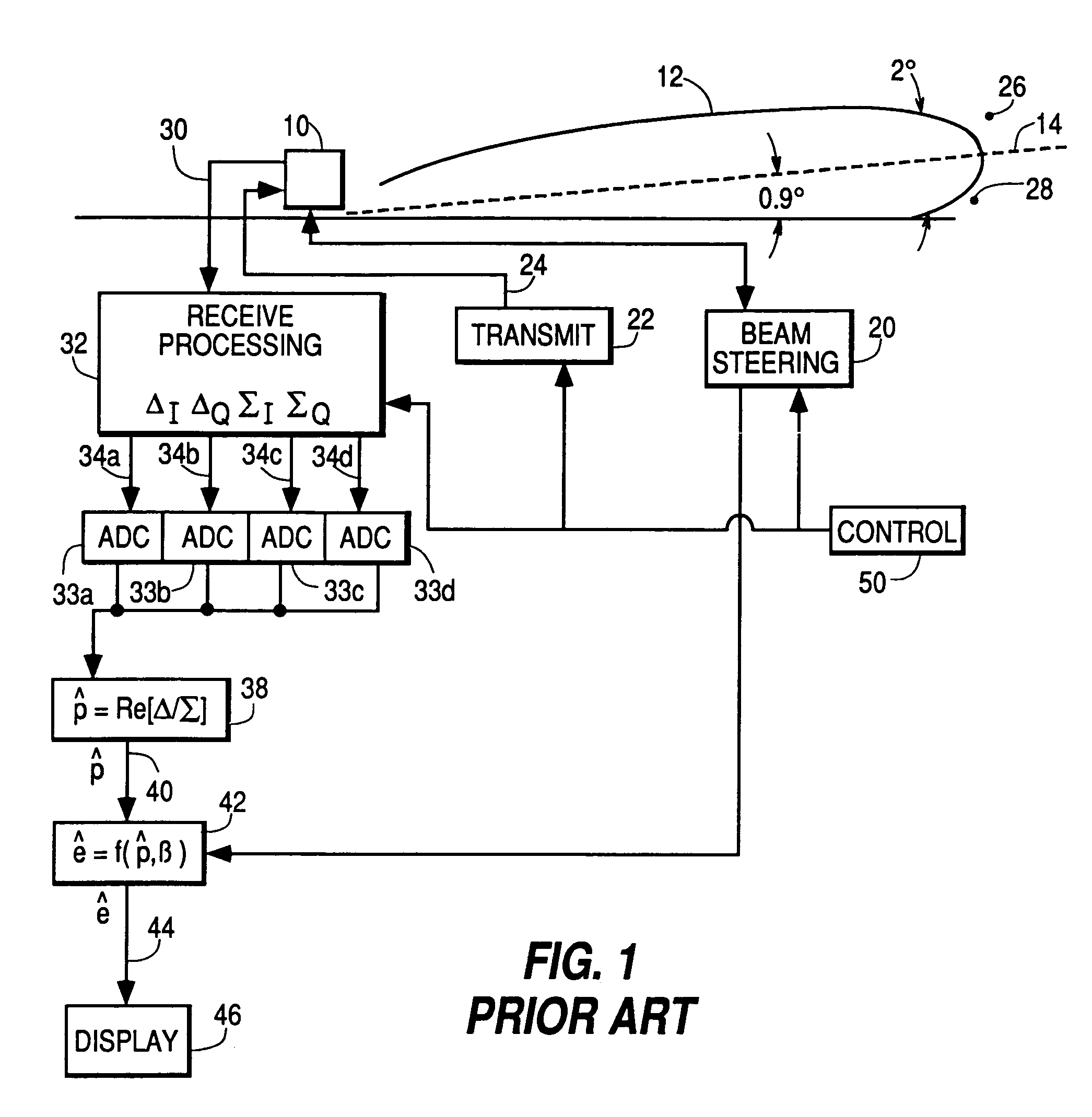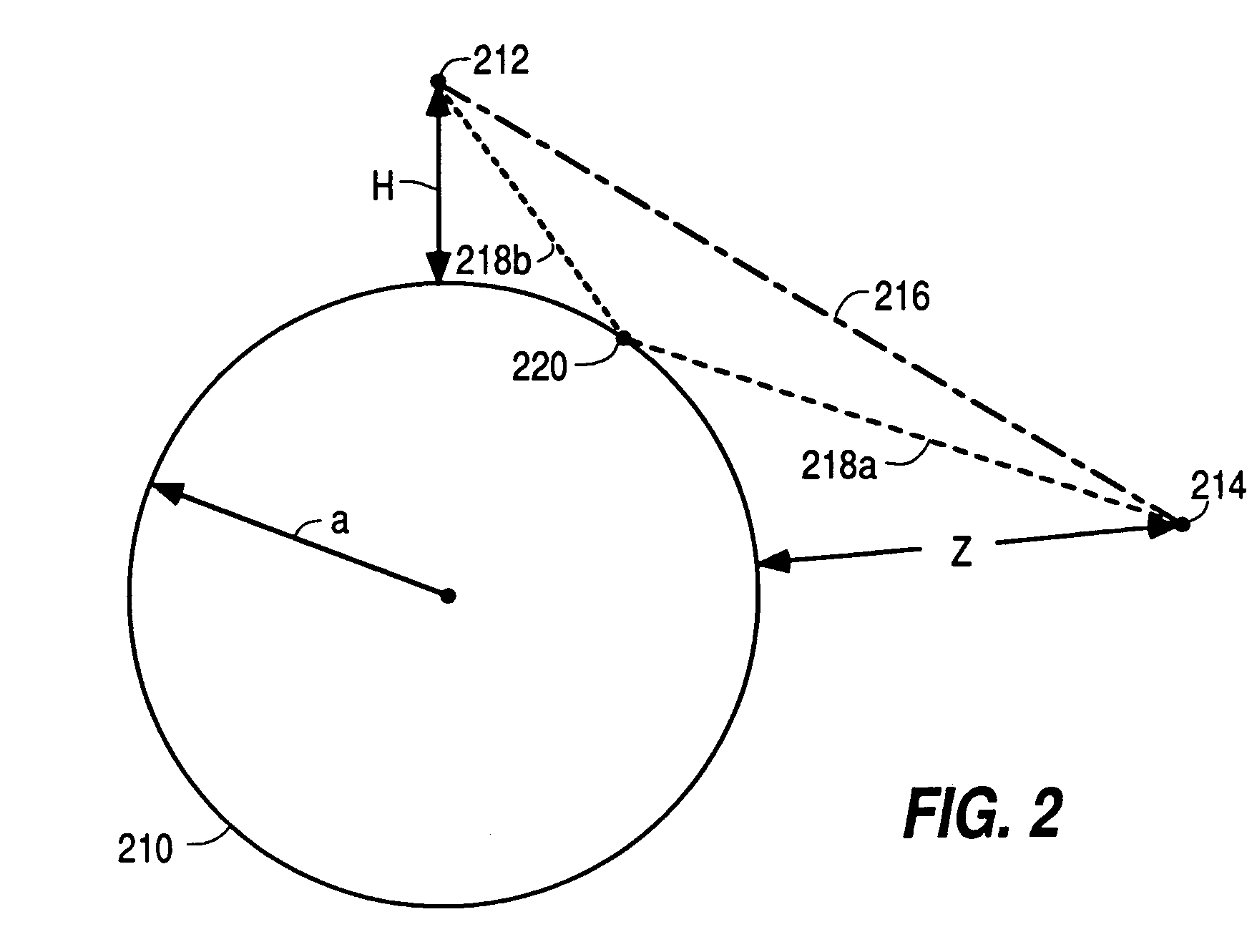Monopulse radar estimation of target altitude at low angles of elevation
a radar and target technology, applied in the field of improved altitude estimates of targets, can solve the problems of large errors at short range, antenna beamwidth cannot be relied on to separate direct and reflected signals, and interference of received signals that is constructive or destructive, so as to achieve the effect of minimizing errors in elevation angle estimation
- Summary
- Abstract
- Description
- Claims
- Application Information
AI Technical Summary
Benefits of technology
Problems solved by technology
Method used
Image
Examples
Embodiment Construction
[0022]In FIG. 1, the direction in which the main beam 12 (or plural main beams, not illustrated) of array antenna 10 is directed is controlled by beam steering arrangements illustrated together as a block 20. Such beam steering arrangements control phase shifters (not illustrated) associated with antenna 10 in a predetermined manner, and are well known in the art. A transmitter illustrated as a block 22 is connected with antenna 10 by one or more paths illustrated together as a path 24 for coupling signals to antenna 10, which in turn transmits the signals in the form of electromagnetic radiation. The signals produced by transmit block 22 may be simple, constant-frequency pulses, as described for example in the text Principles of Radar, by Reintjes & Coate, published by McGraw-Hill, 1952. As an alternative, frequency-jumped pulses may be used, as described in U.S. patent application Ser. No. 266,757 filed Nov. 3, 1988, or continuous-wave signals of varying frequency may be used.
[002...
PUM
 Login to View More
Login to View More Abstract
Description
Claims
Application Information
 Login to View More
Login to View More - R&D
- Intellectual Property
- Life Sciences
- Materials
- Tech Scout
- Unparalleled Data Quality
- Higher Quality Content
- 60% Fewer Hallucinations
Browse by: Latest US Patents, China's latest patents, Technical Efficacy Thesaurus, Application Domain, Technology Topic, Popular Technical Reports.
© 2025 PatSnap. All rights reserved.Legal|Privacy policy|Modern Slavery Act Transparency Statement|Sitemap|About US| Contact US: help@patsnap.com



